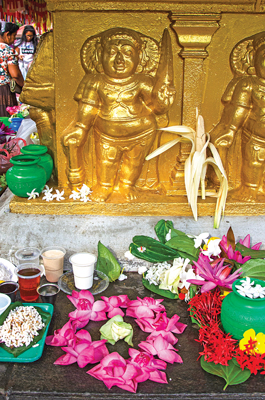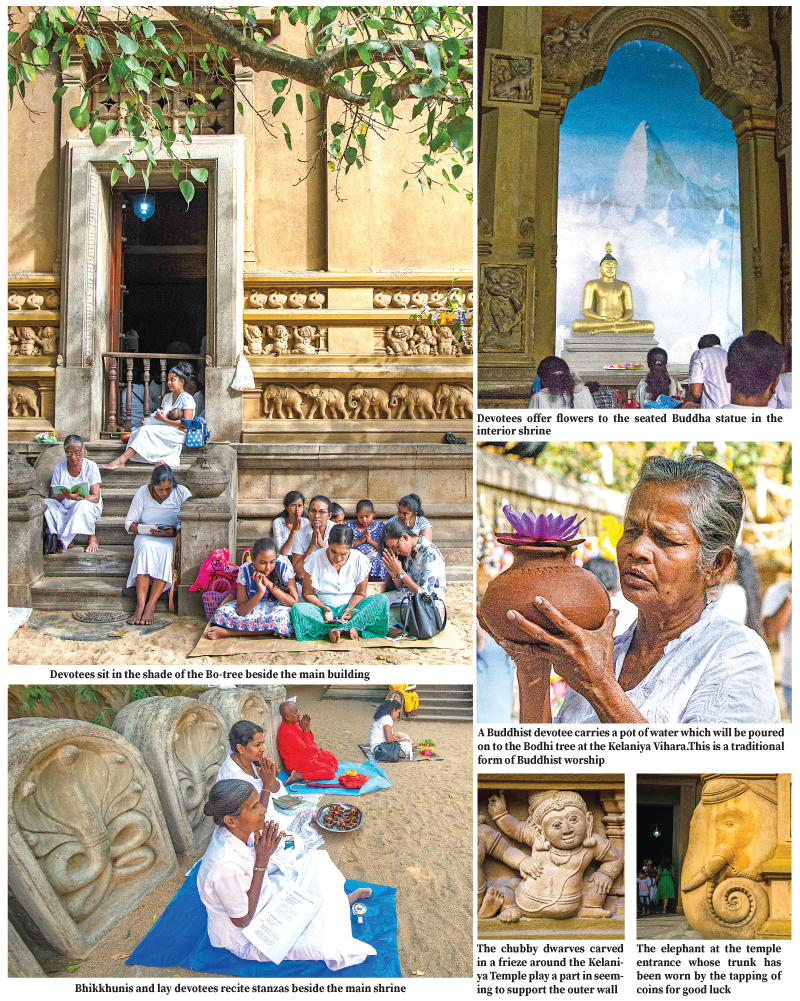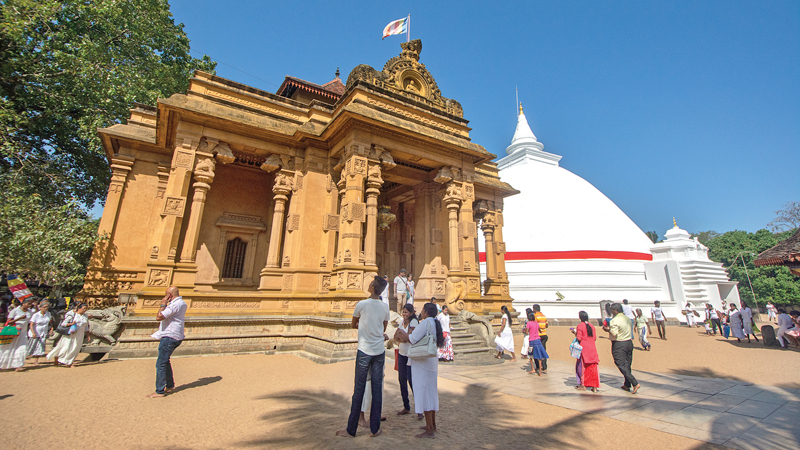 Thousands of Buddhists will throng the Kelaniya Raja Maha Vihara to receive blessings from the ‘Triple Gem’ on the first day of the New Year
Thousands of Buddhists will throng the Kelaniya Raja Maha Vihara to receive blessings from the ‘Triple Gem’ on the first day of the New Year
As we enter a new year, images of incredible courage and resolution are imprinted in our minds. But most religious – minded folk gather at religious places to get blessings from whatever faiths they belong to. Today, my intention is to portray the daily activities at the Kelaniya Temple as a visual story.
The most important centre of faith for Buddhists in Colombo and its suburbs is at Kelaniya, seven kilometres North-East of Colombo Fort and a short detour off the Kandy Road. Indeed, the Kelaniya Raja Maha Vihara is said to be one of the three places in the island that the Buddha himself made a special visit. Among the Sinhalese the religious significance and deep veneration for Kelaniya is expressed in the popular Sinhala folk verse or poem.
“All sins from birth are absolved
If you worship once at Kelaniya”

Floral offerings at the base of the Bo-tree
The meandering Kelani Ganga flows serenely in front of the Kelaniya Raja Maha Vihara which has an attractive environment with scenic beauty. White clad devotees line up in front of the vendors selling flowers to buy the blooming pink lotuses. Some walk hurriedly to the temple with pooja offerings. This is the everyday scene on any given busy morning in this sacred area.
The Kelaniya temple holds a special place of reverence in the hearts of the Sri Lankans. Thousands of pilgrims with faith and fervour climb the steps to reach the upper platform where the temple is located. Devotees light coconut oil lamps, joss sticks, camphor and hang ‘prayer flags’ around the Bo- tree and offer flowers to the Buddha image and dagaba in homage and in fulfilment of special vows.
Gem-studded throne
According to the Mahavamsa, the unusual ‘paddy-heap’ shaped dagaba in Kelaniya marks the spot where the Buddha on the request of a Naga king sat on a ‘gem-studded throne’ to preach the Dhamma to his subjects and convert them. It is ascribed to King Yatala Tissa of the 3rd Century B.C.E
The modern vihara, built earlier this century has distinct elegance. Frescoes adorn its walls, telling stories of the Buddha, Buddhism in Ceylon and the history of the Kelaniya Temple. Geometrically patterned ceiling paintings in the main hall are fascinating. There are also three important Buddha images, one reclining and the other two seated. Rows of comical dwarfs and elephants copied from Polonnaruwa’s Tivanka Image House, adorn the outer walls.
The temple premises are filled with devotees on Poya days, especially on Duruthu Poya. The annual perahera at Kelaniya which was inaugurated in January 1927 is held during the January full moon (Duruthu) poya day. It celebrates the Buddha’s visit and perhaps is second only to the Esala Perahera in Kandy in its spectacular celebration.










